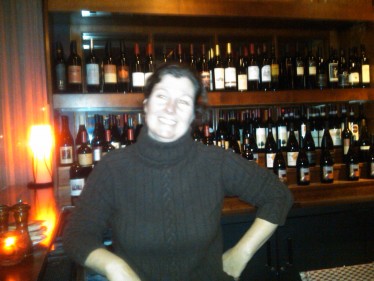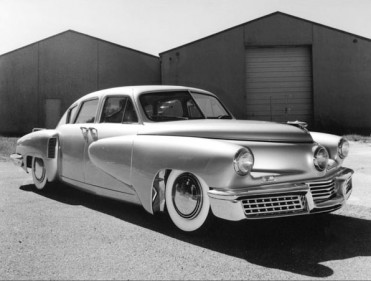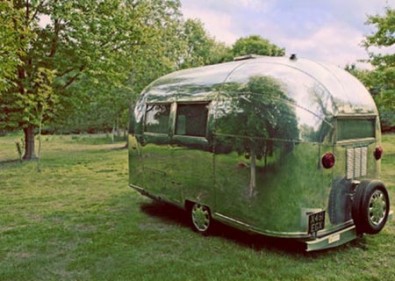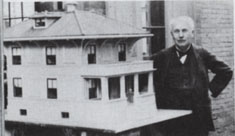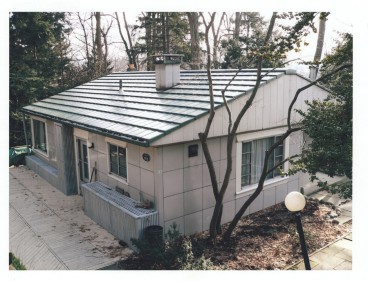Dead Poet
I walked over to Willow for lunch yesterday. I normally eat at the desk, but I wanted to raise a glass of wine yesterday to honor the exact minute of the 70th anniversary of the Japanese attack on Pearl Harbor.
It was raining, a chill dank penetrating mist that made me unzip the hood concealed in the collar of my Burberry jacket. I shrugged it off and let it drip in the bar, which was empty. The murmur of voices carried from the dining room, which had a fairly brisk trade despite the inclement weather.
I ordered one of Tracy O’Grady’s excellent Caesar salads and a glass of wine. The salad comes adorned with imported white anchovies, shaved smoked Gouda cheese and drizzled with dressing, lemon and dotted with marvelously crisp croutons.
I put my Blackberry on the bar and watched the minutes tick over on the display.
When it proclaimed “12:55,” I got up and walked into the conversation nook and faced west, looking out at the rain, and stood silently for a minute. I thought of the whine of aircraft engines and the bright crimson blossoms of the deadly cargo that was delivered with such precision on the wings of the soft Sunday morning trade winds long ago.
Then I sat down again at the bar on the stool next to the one where my jacket was dripping moisture on the waxed wooden floor.
Katya had the bar duty, and responsibility for a table in the Nosh area, so we chatted as she bustled about.
“So,” I said “it was seventy years ago that the Empire of Japan blew the crap out of the Fleet that Sunday morning.”
Katya has an exotic look. Her dark hair was pulled back in a short ponytail, which I gather is Deborah’s direction for uniform standardization, and her dark eyes had a sparkle in their extraordinary depth. She had worked at Willow before I became a regular, and now was back as she completed her college education.
She nodded and poured me a glass of Pino Grigio- not the Happy Hour usual, but c’est la vie. Even preferred customers can’t get happy hour prices at lunch. “Since we are commemorating anniversaries, when did your family come here from Byelorussia?”
She shook her head. “It is a bit of a story. I have a table to take care of, and can’t do it justice. The short version is that my Grandparents came after the war.”
“Holy crap. They were in Russia when the Germans came?”
She nodded, but shrugged. “It will take a while to tell it completely.” She placed the mound of salad in front of me with a smaller plate alongside with a neatly-folded snowy white cloth napkin and fork on top next to it.
“Could I get a knife?” I asked.
Katya smiled. “I always forget.” Then she disappeared out the back to serve a couple at the table around the corner from the bar. When she returned, I asked her if her Grandfather had been in the Red Army.
She shook her head. “No, he was impressed into the German Army.”
“Jesus,” I said. “I heard some people in Byelorussia and Ukraine waved little Nazi flags when the Wehrmacht rolled in. They thought the Germans would let them have their land back from the collective farms that Stalin jammed down their throats.”
“In some ways it was like the Reds and the Whites all over again. Grandfather did not want to go with them, but he had no choice. He was a poet. You say it is seventy years since the Japanese attack. Grandfather said that in December of 1941 the Nazis could see the spires of the Kremlin in Moscow.”
“Jeeze, what happened to him?”
“When the Reds started the counter-offensive seventy years ago this month, he did what he had to do.”
“It must have been very weird,” I said. “The Nazis recruited an SS Division there, I think. It must have been like the civil war after the Bolsheviks deposed the Czar.”
“I don’t know about that,” she said. “But Grandfather was captured and sent to Siberia to the Gulag for nine years. He is gone now, and he is buried here.”
“Damn. Your grandfather witnessed all that as a poet. It is like One Day in the Life of Ivan Denisovitch”
“Would you like another glass of wine?”
“I would, but then I wouldn’t go back to work. This was supposed to be a quiet moment of commemoration, but I guess I forgot there was a lot going on this month.”
“It all depends on your perspective. If you come back this evening I can tell you more. It is quite a complex story.” Katya slid a black folder with the check in front of me, and I pulled out my credit card as I munched the rest of the salad thoughtfully.
When I was done and the check was settled, I walked back to the office in the rain. When I got there I looked at some spread-sheets on projects that were likely to come up for re-compete over the next few months. The rain streaked the windows and the clouds made evening come on early.
The darkness wrapped itself around the building.
There was a note in the late mail from my sister Annook. She wants to get Big Mama a cat.
“Just the thing,” I thought. Then I put on the Burberry and walked out to the elevator and down to the street and into the evening.

Copyright 2011 Vic Socotra
www.vicsocotra.com
12:55 EST
(Mitsubishi A6M Zero-sen and moth.)
So, Annook writes to Spike and me last night, wondering if Big Mama could benefit from having a cat. Apparently she thinks that would address some of the engagement issues that are cropping up as the Turner Classic Movie Channel increasingly becomes the mainstream of her cognitive reality. She is like a moth, flying toward a light, I think.
Graceful, still delicate, but not in controlled flight any more.
I wrote her back, saying I didn’t have a problem with pet ownership, per se, but that the problem is that Big Mama is drifting off into the great space-time continuum, and this is a one-way journey with no return. Having another living being responsible on her doesn’t seem to me to be a constructive answer, but who knows.
Annook also visited Raven, who was being treated to a bathroom break, and then promptly went to sleep in his narrow hospital bed. She considers him to be gone already, and I am not sure I disagree with her.
Big Mama’s drift has made it difficult to do much holiday planning. Maybe I should just suck it up and go for Christmas and chalk it up to being maybe the last one I spend with her.
That is what I was thinking, out loud, at Willow last night. Old Jim and John-with-an-H were on my flanks, and Short Hair Mike showed up to provide an update on his life and times. He is switching company shortly- creative differences with management, I gathered, as he recounted the events that led up to the decision, I got a touch of vertigo.
There is a fair amount of that going around these days.
“So, is your buddy Mac going to be here tomorrow?”
“What, for Pearl Harbor Day?” I asked. “I don’t think so. Mac did not get to Pearl until February of 1942, about eight weeks after the attack. The 70th anniversary we are looking to celebrate is in June, the Battle of Midway.”
“Not many veterans left,” said Jim.
“Yeah, I heard they are going to disband the Pearl Harbor Surivors organization. There are not enough vets left to staff the organization. In fact, I bet the surivors number just about the same as the number of people killed in the attack.”
John-with screwed up his brows in concentration. “That would be right around 2,500 left, correct?”
“Yep,” I said. “Exactly a balance between those who we taken and those who live.”
“Amazin’,” said Short Hair Mike, signaling Tinker Bell for another lager. “The world goes on, don’t it.”
“It does indeed,” I said. “There will be survivors at the Arizona memorial for another few years, but the organization ceases to exist at the end of the month.”
Jim looked contemplatively at the long-necked Budweiser on the Willow coaster in front of him. “I remember when the last Civil War vet died in the ‘50s. That is when the Grand Army of the Republic ceased to exist.”
“In their day, the GAR had nearly a half-million members,” I said. “You can still see the old chapter houses in little towns in Ohio and Pennsylvania if you know what you are looking for. There is a big fancy one in downtown Detroit. Been abandoned for years,” I said and polished off my happy hour white. “I gotta go. Early morning tomorrow.”
“Got any plans for seven o’clock when the attack happened?”
I shrugged. “12:55 Eastern Standard Time is the anniversary,” I said. “I will try to remember. But you know how drifty things can get.”
I got off my stool shook hands around, and walked out of Willow and into the mist of the early nightfall. “Lest we forget,” I thought, waiting for the traffic to thin on Fairfax Drive. “Lest we forget,” I murmured and stepped off into the darkness.
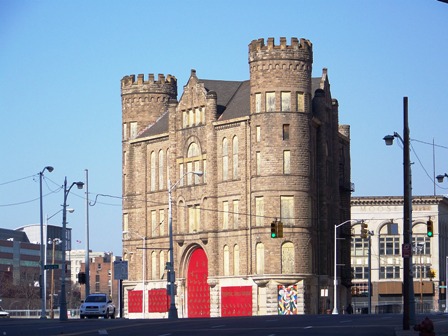
(Grand Army of the Republic Chapter Hall, Detroit. Photo Socotra.)
Copyright 2011 Vic Socotra
www.vicsocotra.com
Small Business
“Nice Christmas card,” I said, as I walked into Willow and saw Old Jim as his customary position at the apex of the Amen Corner. I was surprised to see his lovely wife Mary with him. She normally joins the barflies as a work in progress in her downtown grown-up suit. This evening she was in jeans and a festive crimson top.
I looked in vain for a place to sit down. A big crowd of Fish and Wildlife Service folks were Occupying the small tables across the aisle from the bar. They had built no impromptu structures in Willow’s lounge. They are nice folks, but in order to accommodate their number, they had appropriated all the stools from the bar.
My phone went off, and I took a late business call from an eager beaver looking for SCIF space to pitch in a government proposal, and I tried to remember what the status of the rented secure space out in Fairfax. As the government contracting business teeters in the balance with the budget uncertainty, we are all looking for opportunities wherever we can find them.
I heard in the course of the day that Boeing, Lockheed and Northrop-Grumman had started laying people off, and it was a chill wind on the back of the neck that had nothing whatsoever to do with the coming winter.
When I got back inside a stool had miraculously appeared in my customary place at the bar, and Katya, her dark Byelorussian eyes smoldering, was pouring me a glass of happy hour white. I smiled and tried to put the business day behind.
“Great freaking card,” I said, and Mary beamed. “But don’t take it personally, I don’t think I am going to do cards this year.”
“Oh, don’t worry about that,” she said. “This is the first time we have done Christmas Cards in thirty years. We just couldn’t resist that picture of Jim my sister took in Canada last summer.”
“It is priceless,” I said. “The bulldog head on Jim’s cane is a dead ringer for him. Fabulous picture.”
“Bah, Humbug,” said Jim with a scowl.
“And that was the perfect caption for the picture. Bah!”
“Humbug!” he responded, and took a sip of his Budweiser long-neck. “He gestured at some Millennials seated in the conversation nook. Those assholes have been sitting over there drinking tea for two hours. That is why the Fishheads are camped out over here.”
“I know you would give them the boot, if this was your bar. But Willow is nice to their customers.”
“Too nice,” he growled.
“To what do we owe the honor of your presence Mary? You normally don’t get here until later.”
She laughed. “I had to take the dog in for shots, and I was planning on going into the office at noon. Then I decided that I would just play hooky today.”
“Bless you. ‘Tis the season,” I said. “I confess I am down a quart on Christmas Cheer this year.”
“My pal Judy is coming by later, so we are just going to have a day off- sort of an extra three-day holiday on the eve of the holidays.”
“Nice,” I said. “I feel like I have been ridden hard and put away wet. That trip to Michigan about finished me off, and I don’t know when I have to go back.”
“Nice card,” said Tracy O’Grady, Willow’s proprietor extraordinaire. She appeared across he bar, and like Robert the chef, she likes to make a pass through the bar before things really get rolling in the kitchen. Her luxuriant ginger hair was pulled back in a pony-tail and she wore a turtleneck Irish fisherman’s sweater that set off her peaches-and-cream complexion nicely. “It really was perfect. I posted it back in the kitchen so all the staff could see it.”
Tracy did not seem to be in much of a hurry to get to work, and I noticed her eyes looked fatigued. “You look tired, Tracy,” I said.
She shrugged. “It is going to be busy until after New Year’s, and Restaurant Week comes early this year. That will be on the 9th, and then it is Valentine’s Day and then Saint Patrick’s Day. We don’t get a break, and frankly it is pretty brutal this time of the year.”
“I heard you served 250 Thanksgiving dinners,” said Jim.
“Yep. And then right into the Christmas season. Two days off a week doesn’t make it, plus there is all the book work.”
“Who does that?” I asked. “Do you have a business manager?”
Tracy shook her head. “I do it all. I have a book-keeper, of course, but I have to keep everything straight and do all the reporting to the County and pay the taxes and all that. It is a real snarl.”
“How many people does Willow employ?” I asked. “You are exactly the engine of employment that everyone keeps blathering about.”
“I have fifty on the books,” she says. “And what a nightmare. When one of the waiters gets parking tickets the County comes to me. I think they ought to do their own jobs.”
“And child support and all that, I imagine.”
Jim snorted. “Everyone is a little short these days. The restaurant business is a tough one. I saw a column by George Will about how hard it is to stay in business. He wrote about Carl’s Junior, the hamburger chain out west. It started with a guy who bought a hot-dog cart and put it across the street from the Goodyear Plant when he saw the number of war workers. He got hassled almost immediately when the city insisted he had to have restrooms.”
“A hot dog cart with restrooms? That would put all those people out of business downtown.”
“Carl cut a deal with a gas station. That was bad enough, but Will claims that there are 57 categories of regulations that apply to the restaurant business.”
“That seems about right, said Tracy. “It is bewildering. All I wanted to do was cook great food and run a fun little place. I learned the business the way it used to be, and I barely figured that our before everything changed. I have no idea how it all works now and I have been doing this all my life.”
“You do that very well,” I said, taking a sip of happy hour white.
Jim said: “The upshot was that Carl’s is no longer building outlets in California, but are going to open a hundred in Texas next year. They employ like 70,000 employees.”
“Yeah, but who wants to be in Texas?” I asked.
“Not me,” said Tracy, and turned to walk back to the kitchen.
Judy walked into the bar and sat down next to Mary around the corner. “Did I miss anything?” she asked brightly. “Nice card, by the way.”
“You haven’t missed anything yet,” said Jim. “But I haven’t thrown those jerks out of the conversation nook.” He finished his current beer and signaled Katya for another. “Not yet, anyway.”
“Don’t make any more trouble for Tracy,” I said. “Sounds like this is hard enough as it is. She has got fifty people to take care of. Small business takes big energy.”
“Did you hear about the latest from those loons at the conference at Durban?”
“No, now what?
“The Revolutionary Government of Libya has a scheme to solve all the world’s problems. They sent six delegates to the climate conference.”
“Well, along with South Sudan, that makes 200 nations with interests in the climate.”
“Oh, they have an interest, all right.”
“They are oil exporters. Why would they want to go green? What are they up to?”
“They are suggesting a monster geo-engineering project that would not just cool the Earth by 6 degrees centigrade, but it would cut carbon dioxide emissions to zero by 2021. It would reverse global warming, provide power for two billion people, lower sea levels and restore the climate of 1750.”
“Sounds like the dinner that cooks itself while you drive home from the office. Or the Popeil Pocket Fisherman.”
“Nah,” said Jim. “They say they want to build a few dozen eight-mile wide venting towers to create constant winds in the desert to drive massive windfarms which in turn would electrify the world.”
“Awesome,” I said. “What a great idea. Any idea what this would cost?”
Jim took a deep draught of beer and brought the bottle down on the Willow napkin with a thud. “They figure they can squeak by with $45 Trillion. That is the “T” number.”
“Holy smokes,” I said.
“They figure that by 2080 the climate will be back to the way it was in 1750.”
“That is amazing,” I said. “But what was the weather like that year?”
“It sucked in England, and that is the only place they know about.”
“You just can’t get value for a few trillion dollars anymore, You know?”
“Bah, Humbug, said Jim, and finished his Bud with a grin.

Copyright 2011 Vic Socotra
www.vicsocotra.com
Editor’s note: I checked when I got home. The British climate of 1750 was described by Horace Walpole, Member of Parliament, who wrote: “[The year] opened with most unseasonable weather, the heat being beyond what was ever known in any other country”. Severe earthquakes and widespread flooding followed.
Indaba
“Working Together, Saving Tomorrow Today.”
Motto of the COP-17 Climate Meeting at Durban
Man, there is a lot to consider as we plunge into this week.
Annook is in the Little Village by the Bay, and reports that Big Mama is settling into life without the peripatetic Raven. That is good news, and may have a direct impact on my life and travel plans. We will have to wait and see how her two-week visit goes.
The looming and slow-motion collapse is immediate and real, and requires action, I just don’t know what that is.
To a degree, the two titans of Europe, German Chancellor Angela Merkel and French President Nicolas Sarkozy are meeting so frequently to defuse the collapse of the Eurozone that wags have taken to calling them “Merkozy.” I care about that because I have pal in the Swedish market, and to a larger degree, the collapse of Europe will expose America- and thus the Socotra enterprise- to another rash of bank failures and economic disaster.
I wish Merkozy well. Failure of this beast-with-two-backs will have consequences closer than the middle distance, and I am watching with more than a little bit of angst.
This has all been unfortunate in terms of timing for the 17th Conference of the Parties, COP-17 in shorthand, longer as the 2011 United Nations Climate Change Conference, or for purposes of location, the Indaba. Saving the planet has suffered from some inconvenient coincidences.
Remember the imposing and unusual snowdrifts at the conference on warming in Copenhagen in 2009? Or the record cold that chilled the Cancun conclave in 2010?
Before anyone starts hurling things in this direction, and just for the record, Big Oil has been noticeably absent in supporting Socotra House Publications, and I am no “denier,” a curious term that puts skeptics of current climate science in the same class as Iranian President Mahmoud Ahmadinejad speaking of the Holocaust.
Of course, I am no scientist, but I try to stay current on the intense political debate in progress based on the results of settled science.
Which of course it isn’t. That is revealed in the WikiLeaks-style release of internal e-mails from the central server of the Climate Research Unit of the University of East Anglia. The CRU is the hub for progressive climate science. The discourse reveals the uncertainty even within the true believer community.
Even the most devoted members of The Team acknowledge among themselves that there are real problems with the most emblematic examples of rapid warming caused by the inexorable rise of carbon dioxide in the atmosphere- the famous Hockey Stick graphic produced by Michael Mann of Penn State University.
Don’t rush too swiftly to lump me in with the crazies. I am confident that Climate Change is real. That is what it does, after all, and change is the natural state of this spinning marble with the oceans sloshing around like a colossal bathtub.
The mean temperature of the Earth’s surface has increased by 0.5 to 0.6ºC since 1880. I am more than happy to accept that Anthropomorphic Global Warming is also real to some degree, even if we should investigate why temperatures have not increased to any measureable degree since the late 1990s, while the concentrations of CO2 has continued to increase.
There is clearly something else going on that the scientific method has not yet revealed. The Himalayan Glacier crisis and rising sea level and acid content are much discussed at this Indaba, since the temperature rise is not selling as well as it could.
I get the line of reasoning. If bad things are happening, r about to happen, we need to take action. But about what? I have heard a lot of angst about the increase of severe weather linked to climate change. At the same time, we are in a hundred-year low on tropical storms impacting the US mainland.
The relationship is not clear, and there are those who allege there is not and never has been any real danger of catastrophe or even of serious net detriment to human life due to increased CO2 levels. Indeed, modest increases in these parameters are most likely a net benefit to agriculture.
No matter. The science advocates have convinced the political, media and public establishments that something- something big- needs to be done immediately.
I am happy to reduce my carbon footprint, and none of us are going to have much choice about that, since the price of energy is going to skyrocket anyway. “Green” energy, which in my mind includes the reviled Nuclear industry, is not going to provide any near-term relief.
Clean coal isn’t, though it can get better, wind does not blow on demand, Biomass has problems, and solar does not work so well when the sun is down. Not that every technology shouldn’t be pursued. But maybe it shouldn’t be bankrolled willy-nilly by the government.
The whole cap-and-trade argument is a bonanza for the political classes, or at least it was before the bottom fell out of it all around the world.
Anyway, one of the big deals at Indaba is the issue of fairness. The argument- really quite rational- is that if the First World has contributed unjustly to altering the climate, they ought to pay for it. Accordingly, the second and third worlds are looking for subsidies of a $100 billion a year to help ameliorate the impact of Climate Change.
Considering we are all a little short these days, that is going to be a hard sell. Not that some world leaders are not doing their darnedest to showcase the impact of rising seas:
No one makes this point better than Mohamed Nasheed, President of the Maldives, the Indian Ocean island nation. In the run-up to the summit, he declared that he leads “an island nation that may slip beneath the waves if all this talk on climate does not lead to action soon”.
Since chairing a meeting of his Cabinet underwater, Nasheed has been busy rallying other low-lying countries to make similar points.
Remember: “It is unfair to ask the poorest and most vulnerable to bear the brunt of the impact of climate change alon.” That is the position of UN General Secretary Ban Ki-moon.
Right on. But there is a problem. One of the best scientists in the business- a fellow named Nils-Axel Mörner- who has been looking at sea level issues for 45 years. He asserts that there has been no rise in the seas for the last half century, and a general equilibrium for the last three hundred.
He is a smart guy, whether you like him or not, and I think we ought to look at his evidence. It is a lot cheaper than a trillion bucks.
Indaba is a Zulu word that means “a gathering of wise people, bearing the spirit of Ubuntu.” The translation of that last word I like best is “I am what I am because of who we are.” That is a universalist version of the great French natural philosopher Rene Descarte’s “Cognito ergo sum.”
“I think, therefore I am.” I think we need to think a little more on this, at least before I want to get out my wallet and hand money over to the United Nations.
Just a thought. Of course, the prospect of economic disaster by our own hands- like maybe this week or next- in what you might call Anthropomorphic Financial Catastrophe (AFC) will make it highly unlikely that anyone is going to succeed in extorting a trillion dollars out of the First World.
Not that it might not be a good idea. But we should think about it, right?
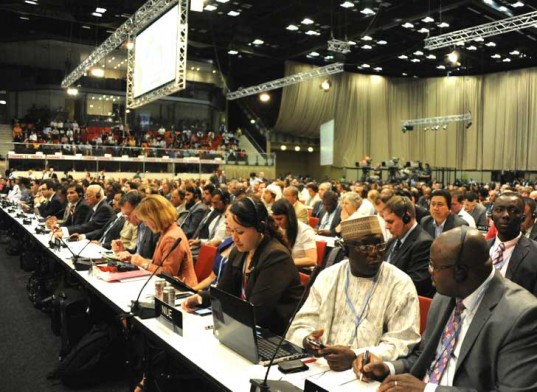 (Delegates to the Indaba confer in Durban. Photo AP.)
(Delegates to the Indaba confer in Durban. Photo AP.)
Copyright 2011 Vic Socotra
www.vicsocotra.com
Joy to the World
04 December 2011

It is bright and sunny here this fine December day, and the sky is a pleasant robin’s egg blue. Temperatures are likely to hover in the mid-fifties, and the road beckons, just like it did yesterday. I couldn’t do much about it, though, since there had too much crap piled up in stacks around the unit after more than a week of neglect in Michigan.
I had the top down on the convertible yesterday and the best of intentions of just goofing off, before I realized how many things needed to be done after a couple weeks paying attention to other things. First, there was the adventure of Raven’s fall that complicated everything.
The phone went off while I was typing an article for the Quarterly. It was Diane, calling from The Bluffs. Raven normally dozes in the recliner in the television lounge She wanted me to be aware of what happened since I hold the medical power of attorney for him. They said he had been in the chair one moment, and the next he was prostrate on the deck.
“The only damage,” said Diane with crisp efficiency “are some abrasions on his elbow.”
“It has happened before,” I said. “He broke his collarbone earlier this year when he fell in the apartment and hit the coffee table.”
That was quite an adventure. It required an ambulance trip ($750 bucks, I discovered later, and that only for the one-way trip to the ER. To get him back to Potemkin Village took a desperate plea to some family friends I do not know, brokered on the phone in a long distance triangle between Washington and Sister Annook in Anchorage and the little Village by the Bay.
I dread the sound of the phone now, since if one of these events requires it, I will have get my butt up there to ensure that he is not captured by the insidious health-care system wind up with a drained estate and unable to take care of Big Mama.
If that is not one of the most curious bits of mental calculus to have to do, I don’t know what it might be. It spoiled the mood of simple seasonal joy. Bah, Humbug, I thought.
Then it was the dry-cleaners, and the Class Six over at the base for gas and a bottle of all-purpose vodka and the Commissary and the carwash and a full load cycled through the laundry room down the hall and the sun was setting. Passing by with the hamper I saw that Priscilla across the hall had decorated her door with a small wreath (permitted by Condo Association regulations) and a little embroidered pillow hanging from the knob that said “Let it Snow!”
I am not done with Fall, much less ready for the snow to come here. I sighed and added decorating the unit to the list of things to be accomplished. You have to keep up with the Jones, right? I don’t want to be a grinch, after all, even if my heart isn’t in this season very far.
One time saver: I never took down the holiday lights on the balcony or draping the big plate glass windows in the living room, so getting ready for the season was a breeze. I just had to get out the miniature wreath for the door, the stained glass Christmas tree, and the holiday centerpiece for the dining table. Voila!
Then I picked up the sheaf of letters that came in the Saturday mail delivery, which I think if supposed to stop one of these weeks. There was a depressing assortment of bills for me and for Raven and Big Mama’s maintenance, and only one that did not demand immediate payment: the first Christmas card of the season.
I opened the card, realizing that I would have to think about what to do about snail-mailing Holiday greetings this year. I smiled when I opened the Vistaprint card. I really admire Old Jim and his vivacious wife Mary. She snapped a picture of him with his walking cane this summer, and damn if it is not a fine summation of the season.
Oh, for reference, Jim is the one in the back.
I don’t have to tell you what the caption is, do I?
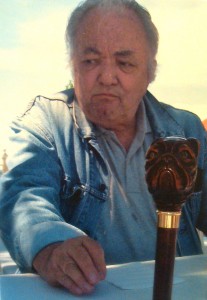
Copyright 2011 Vic Socotra. Photo Courtesy Mary Champagne.
www.vicsocotra.com
A Touching Reunion for Swifties, NILOs and a Cambodian Agent
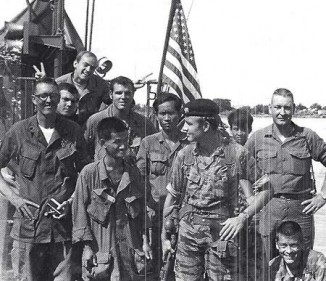
After his rescue by Swifties, Cambodian Senyint Chim (center) went to work for Naval Intelligence. He is seen in this 1970 picture with his Naval Intelligence Liaison Officer, LCDR Jack Herriott (in glasses, along with other NIOLS and agent who taught Senyint how to pretend to be a smuggler, and directed his intelligence collection operations.
Sometimes I really hate my part-time job. I was scrolling through the incoming mail this morning and discovered the lay-out people had sent me a note yesterday. Apparently there were problems with the data-dump of the galley files for the Quarterly publication I edit. I had shipped to them prior to departing for the minor odyssey in Michigan. The files were corrupted, and I spent the morning re-sending them- I think.
There are only a few moments when the hundreds of files, worked on a variety of computers, are all in the same place and order. Frustrating.
In the midst of typing The Bluffs staff nurse called to tell me they had found Raven on the floor of the television room. One moment in the recliner, the next on the floor. They were investigating for possible lingering injuries, though he seems to be fine. I told them he does that periodically, and thanked them for their solicitude. I hate it when the phone goes off with a West Michigan area code.
I wanted to talk about that unpronounceable Icelandic volcano that may go off momentarily, or the big climate change conference in Durban, South Africa, or the fact that the unemployment rate is really hovering around 11% if you count the people who have simply left the work force, unable to find jobs.
On the upside, the stupid Quarterly might actually be done now, Europe, on the eve of a big eruption (remember what a pain in the butt Iceland has been lately, between financial melt-downs and volcanic explosions?) may survive the current Euro crisis with the help of The Fed.
Anyway, here is something I wouldn’t have written to you this morning, except I had to retype it anyway:
On 10 May 1970 s young Cambodian desperate to escape from Viet Cong recruitment gangs scratched a message on a chalkboard, stood on the banks of the Bassac River and waved the improves sign at a pair of U.S. Navy swift boats motoring past on patrol.
The sign was in English. It said: ‘I WANT TO GO WITH YOU.”
His name was Denyint Chim. The Switfies hailed him on loudspeaker: “Swim out to us.”
“I jumped in the river,” Senyint recalled years later. “I was a weak swimmer. A sailor dove off a swift boat into the river to help me.”
The Swifties turned Senyint over to Naval Intelligence Liaison Officer (NILO) Jack Herriott. The Cambodian’s English had come by way of missionary schooling He had valuable information about VC activity in the area. Some undercover work for Naval Intelligence followed, with Senyint’s cover being that he was a Cambodian black marketer), and those efforts le to his opportunity to come to the United States.
Fast forward to May 2011: Senyint, a U.S. citizen, a high school algebra teacher in San Diego, finally had a chance to reunite with the sailors who rescued him back in 19790 and set him on his path to a better world. “That swift boat crew saved my life,” he said. “I’ve spent years trying to find them.”
Thanks to the internet and reunion group sites, Senyint finally realized that dream. By emailing the Swift Boat Sailors Association website, Senyint was reconnected with some of the Swifties of PCF 56, who had vivid memories of the rescue incident.
Senyint was invited to attend the Swift Boat Sailors Association Reunion and participate in the Memorial Day 2011 ceremony at the Naval Amphibious Base Coronado- where swift-boat sailors trained, and where there now stands a wall inscribed with names never to be forgotten.
A bagpiper and honor guard helped mark the moment, and as a ship’s bell chimed, Senyint read aloud the names of swift-boat sailors who made he ultimate sacrifice. It was truly a Memorial Day to remember. – Virgil A. Irwin
Vic
Central Planning
I was going to compare the Lustron Enamel-baked steel houses of 1948 to Solyndra this morning. Or maybe the Chevy Volt. All of them come from the miracle of central planning, which is how a command economy works, or doesn’t, as the case may be. Central Planning takes policy and applies it to consumer demand.
The Lustron houses were part of the same continuing delusion of central planners. I don’t mean to be cruel. It seemed like a good idea at the time, like the wind farms that are not attached to the power grid, or the solar cells that won’t work in Michigan or the Northeastern U to do much except get your water tepid. In the case of the Lustron all-steel home, there was a perfect storm, just like Climate Change that is driving all sorts of amazing decisions. The wonks in Washington decided that it was time for something new.
It sounded so good. Lustron houses were built in former war-production plants with existing tooling, trained workers, and plenty of excess capacity. The low maintenance, extremely durable, baked-on porcelain enamel finish was expected to attract modern families who might not have the time or interest in repairing and painting conventional wood and plaster houses. It was perfect- some outside funding was required, of course, and the Government kicked in $12.2 million. Doesn’t sound like much in these sadly inflated times, but in constant dollars starts to look a lot like the Solyndra subsidy.
I checked constant dollars, and between 1948 and 2008 (the year of the great bust, and the hidden 15% inflation that has snuck up in commodities the FTC doesn’t include in the core rate like gas and food- go figure!) but the figure today would be well north of $120 million, and that was in times when the Government was a little more stingy in crony-capitalism.
Anyway, the Lustron Corporation did exactly the same thing as Solyndra: they shut up shop in 1950, and that was the end of it.
The comparison with the Volt is not a surprising one, and it goes the same way. Despite being an extremely well funded, well-publicized, government-supported enterprise that was generating a desperately needed product, people did not want it.
It is interesting that another maverick is tied up in this. Preston Tucker and his futuristic motor car competed with the government for allocation of the surplus Dodge Chicago Aircraft Engine Plant. Ticker may have been torpedoed by the Big Three (or the movie about him would have you believe that) but I think the failure of the Tucker and the later Edsel were that the consumer thought they looked funny.
I suspect that is exactly what people thought about the Lustron homes and the jury is currently out on the Chevy Volt. The consumer did not want them.
A pal out West sent me the latest sales figures for the Chevy Volt, another of the much-touted Answers to Everything. Well, everything except the tricky bit about where the electricity is supposed to come from to charge them up. We seem to be shutting down coal-fired plants and not replacing them with anything except wind turbines that don’t quite work, and solar panels that are built in China, and don’t give you a damn thing at night or under clouds.
Government-owned Generous Motors sold 1139 Volts in November, up from 1108 in October. More significantly, GM finally admitted they won’t meet their sales targets of 10,000 Volts sold in 2011, itself well below the White House central planning target of 15,000 to be sold this year.
Now, I am no telling you that the Volt is a bust. It is a commendable idea that is about as ready for prime-time as the Chevy Vega I owned back in the gas crunch of 1973- but there it is. People don’t want to drive around in ticking bombs. Remember the Pinto?
There are many additional factors about the failure of central planning and command economies. The Lustron dream was brought low by other parts of the behemoth of government. IN Columbus, Ohio, for example, the metal dwellings could not be built due to local zoning against dwellings with steel chimneys.
And like the Volt, the government was the consumer of last resort. The largest single concentration of Lustron homes was at the Marine base at Quantico. Sixty of the Westchester Deluxe Models were constructed there, and they came in un-Marine pastel colors like “Surf Blue,” “Maize Yellow,” and “Flamingo Pink,” the last of which was reportedly really unpopular among some Jarhead families.
The houses- like electric cars- do have a strong point. They lasted until 2006. The Marines declared the future of 1948 was “too small for most families,”and the homes were available to anyone who would disassemble them and take them away. There was only one taker, a collector who had his Westchester Deluxe taken apart and put in storage. I do not know what color it was. I would like a Flamingo Pink one.
Twenty-three units were demolished by bulldozer in 2006 and another thirty-four in 2007. Two were saved, but are not being used for housing- just storage. They are listed on the National Historic Register, which is where we put things that we have not got around to destroying yet.
There just wasn’t time for it in the Central Plan. But we are working on it.
Copyright 2011 Vic Socotra
www.vicsocotra.com
A Future in Steel
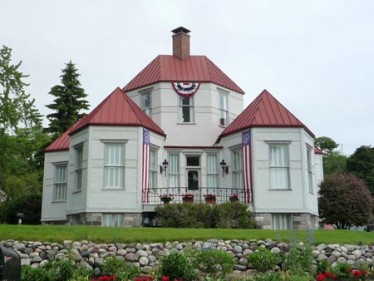
Ephraim Shay’s 1892 pressed-steel house in Harbor Springs, MI, just down the hill from Raven’s Rest at The Bluffs Nursing Home.
First day of December- damn! How did this happen? It is chill here in Arlington, though not the kind of cold that penetrates the bones in the fresh breeze off the Big Lake and the Bay. A trip to Harbor Springs has always been one of the things on the list to do when I am Up North. They have some nice galleries, and the restaurants feature planked white fish and garlic mashed potatoes along the view of The Little Village across the Bay.
On my last visit to Raven at The Bluffs this trip I turned right out of the parking lot on M-119 and rolled down the hill into town. On the left hand side is a green cast-iron historical sign in front of an odd private residence. It is worth pulling over to take a look at the hexagon-shaped home of an American original: Mr. Ephraim Shay.
Like my Great-great-grandfather, Shay enlisted in the Union Army at the beginning of the Civil War, and like James Socotra, he agreed to a three-year enlistment. No one expected the conflict to go on for more than a few months, if that, and thirty-six months seemed excessive. Shay decided not to accept the handsome re-enlistment bonus, and returned to Michigan in 1864 to seek his fortune in the Northland. James Socotra accepted the bonus and signed up for another hitch. The 30-days leave incentive that came with the re-enlistment gave him the chance to spend some time at home with the woman who would become my great-great grandmother, and she convinced James that the war could go on without him.
He opened a store, and practiced war no more. He was not known for much else,
Ephraim Shay was a tinkerer in the tradition of Thomas Alva Edison. The American attic is filled with inventors. Shay’s specialty was metallurgy: mostly in the fields of cast iron and steel. He developed a unique locomotive that could run on wooden rails, a huge breakthrough that enabled the logging industry to clear-cut the remaining old-growth pines of the lower peninsula of the Wolverine State.
Before there was tourism, there was the race to harvest the vast forest of the north. The strange hexagonal house in Harbor Springs came after Shay established his work-shops at the east end of Harbor Springs. The Hexagon is the last remaining building in the complex, and is perhaps the most significant in the tradition of American inventiveness.
Where Edison thought that houses might be constructed in a one-pour operation from concrete, Shay thought another material might work better. His stamped-steel Hexagon was thrown up in 1892, a decade before the Wizard of Menlo Park experimented with casting homes in one smooth operation.
Edison’s scheme produced only a hundred houses, but there was only one Shay Metal dwelling, and it is a fascinating thing to see. What killed it? I don’t know. Lack of a sound distribution and marketing plan, I suppose, or public skepticism about living in iron.
The vaguely gothic shape of Hexagon House is not what the people at Lustron were looking for. The engineers at Lustron aimed to harness the power and energy of the war production plants to meet the housing crunch caused by the return of The Boys from overseas.
You can see a kindred spirit in the famous B-29 lines of the original Airstream mobile homes. They still look slick, don’t you think?
Anyway, if I had not got lost with Mr. Ephraim Shay this morning, I would have told you about how Lustron went south, and where you could have seen one right here in DC. Actually, still can, since there are two remaining out of more than a hundred down at the Marine Base at Quantico.
Regrettably, I am out of airspeed and ideas all at the same time, and will have to get back to you tomorrow about the vision of an all-steel future.
Copyright 2011 Vic Socotra
www.vicsocotra.com
Lustron Living
Thanks for bearing with me- the tale of The Parental Project in Michigan is painful both in the telling and the listening. I am pleased to be back in my own bed, a place of splendid comfort (albeit solitary) and hanging out with Elizabeth-with-an-S and Old Jim and John-with-an-H at Willow.
One of my confederates reported a sighting of Jim-the-Bartender out in the wilds of Loudoun County, tending bar, so the extended Willow family continues our peculiar fellowship. Jim is doing fine, by the way, and owner Tracy O’Grady passes along her best regards. She looked her Irish best in a cable-knit turtleneck sweater last night as she came out to greet the usual suspects at the Amen Corner of the bar.
I am fairly open to new ideas, which was evident at the bar last night, but I confess to having a passion for things that have gone before, and which still exist in our bewildering modern world.
That accounts, in part, for my fascination with the marvelous Mongol travel lodge- the “yurt,” and extends to how Arlington became a bedroom community to the District. I am a member and contributor to the Civil War Preservation Trust, which attempts to save historic farmland against the clutches of the developer community. During the boom years here in Virginia, the builders where quick to get the bulldozers on the property and knock down earthworks that remain from the time when DC was the most heavily defended town in the world.
It is really weird. My pal the Good Doctor has a chunk of the massive rampart of Fort Scott in his back yard, and if you know where to look, the ghostly shadows of massive earthworks and vanished military roads and sniper trenches still exist. They give a sense of the times long ago, now overwhelmed by the little houses of the 1950s and the McMansions that were thrown up in the hysteria of the housing bubble.
I had a real advantage in getting a perspective on historic buildings. Growing up in Detroit before it died/committed suicide, we made frequent visits to The Edison Institute (Henry Ford Museum) and Greenfield Village, where the wily old automaker actually had historic structures torn down and rebuilt in situ in exotic Dearborn. When the civic leaders of those towns recognized what had been stolen from them, I am sure they seethed in resentment, but it was cool to be where all those historic buildings wound up.
Thomas Alva Edison’s Lab from Menlo Park, New Jersey, is among the exemplars of heisted history, as is the original Wright Cycle Shop from Dayton, Ohio.
At the reconstructed Menlo Park complex, Edison himself recreated his invention of the incandescent bulb, and when he put down his tools on the workbench, they were never touched again by human hand.
The wizard of Menlo Park had his chance to play with affordable housing as well; Edison’s 1908 system of concrete construction is the best known example of a mass-produced concrete house. Edison envisioned an elaborate system of forms and machinery to pour a whole house in one swell foop: sectional cast iron forms bolted together were to be assembled on the foundation walls to the height of the house, ending in a central funnel into which the concrete was poured fresh from the mixing truck. Custom built-ins included concrete bathtubs.
It turned out to be too hard. Fewer than 100 were constructed; and even if it was not practical, many are still standing and inhabited.
I am not aware that the Lustron Corporation is represented in the collection of buildings at Greenfield Village. -It should be, along with examples of the Sear’s kit houses you could order from the catalog. Those are almost ubiquitous, and thousands of extent examples leap out at you in quiet neighborhoods all over the country.
The technologically sophisticated Lustron House (“The House America Has Been Waiting For”) was seen as a social policy solution for the dire post-World War II housing shortage. Here was the issue: millions of GI were being demobilized, and they wanted their old jobs back and to get on with life. The cookie-cutter development of Levittown was one approach to meet demand; here in Arlington, Francis Freed (“The Queen of Buckingham and Big Pink”) turned development of the Clairmont neighborhood on properties acquired by her late husband to her son. The Freeds began building little boxes to accommodate intense demand.
I will take you down there some time, if you happen to be passing through town. It reflects a different world view than the one we have at the moment, though that could change, and it will be the McMansions that look vaguely….obscene, you know?.
Both the Clairmont neighborhood here in Arlington, and Levittown on Long Island were totally integrated projects that borrowed from Allie Freed’s assembly-line construction methods, which in turn were adapted from Henry Ford’s manufacturing philosophy.
The Lustron corporation aspired to be something universal. Rather than selling the whole package- land and structure- Lustron wanted to take the Sears catalog approach to the next level, leveraging war production capacity to meet civilian demands.
Hey, it was after the biggest single nightmare ever experienced on the planet, and a great idea. Even the Government could recognize it. The homes were built entirely of steel in a former airplane factory using materials and technology developed during the war.
Interior and exterior surfaces were porcelain-enamel steel, sort of like your kitchen range or your dishwasher. Ditto for the roof shingles. The frame was all steel (garages had wooden joists) and the whole shebang was advertised to be “zero maintenance.”
Lustron homes sold for between $6,000 and $10,000, and all 3,000 pieces of the house arrived on a custom truck at the job site. The company manufactured about 2,500 of homes in three basic models between 1948 and 1950.
That might have made Lustron a candidate for Greenfield Village, but the company went bust in 1950, just like solar panel developer Solyndra. The Feds had over $12 million in special loans in the Lustron company, and considering that they were 1940’s dollars, it was quite an investment, just like the half billion we wasted on solar panels.
Lustron’s brief corporate life informs us about how all this science and technology comes together with Government patronage. It is an interesting backstory to a remarkable technology.
I will have to get that tomorrow. If I keep pounding on this I will lose my job, and be back to looking at yurt living.
Copyright 2011 Vic Socotra
www.vicsocotra.com



